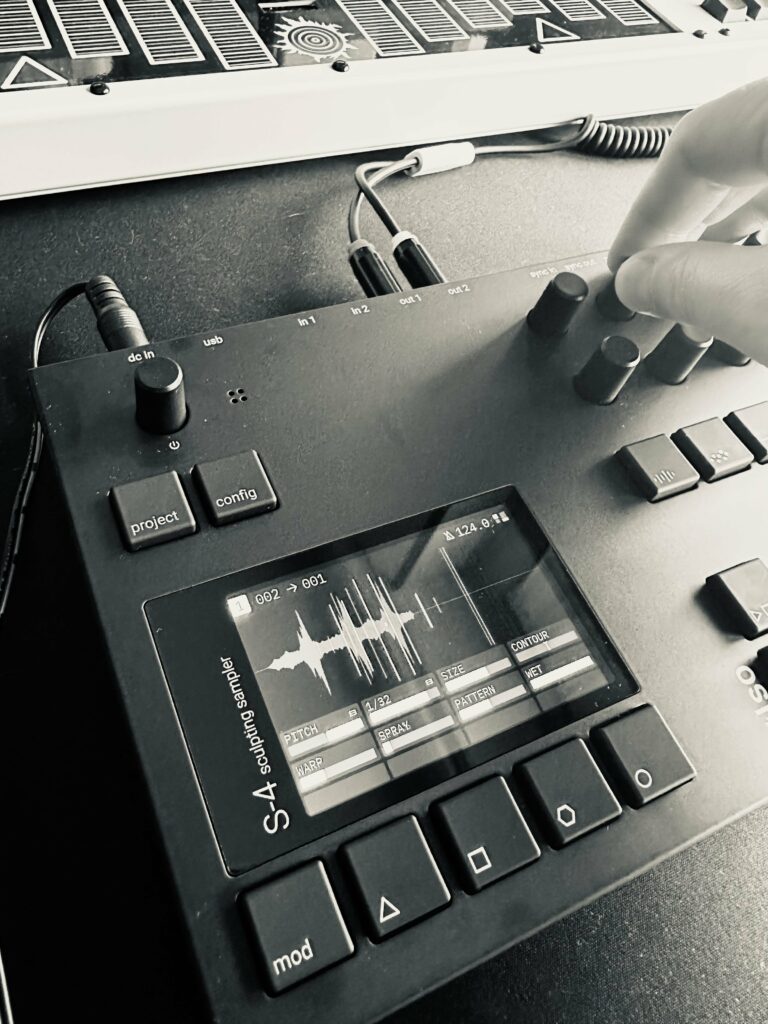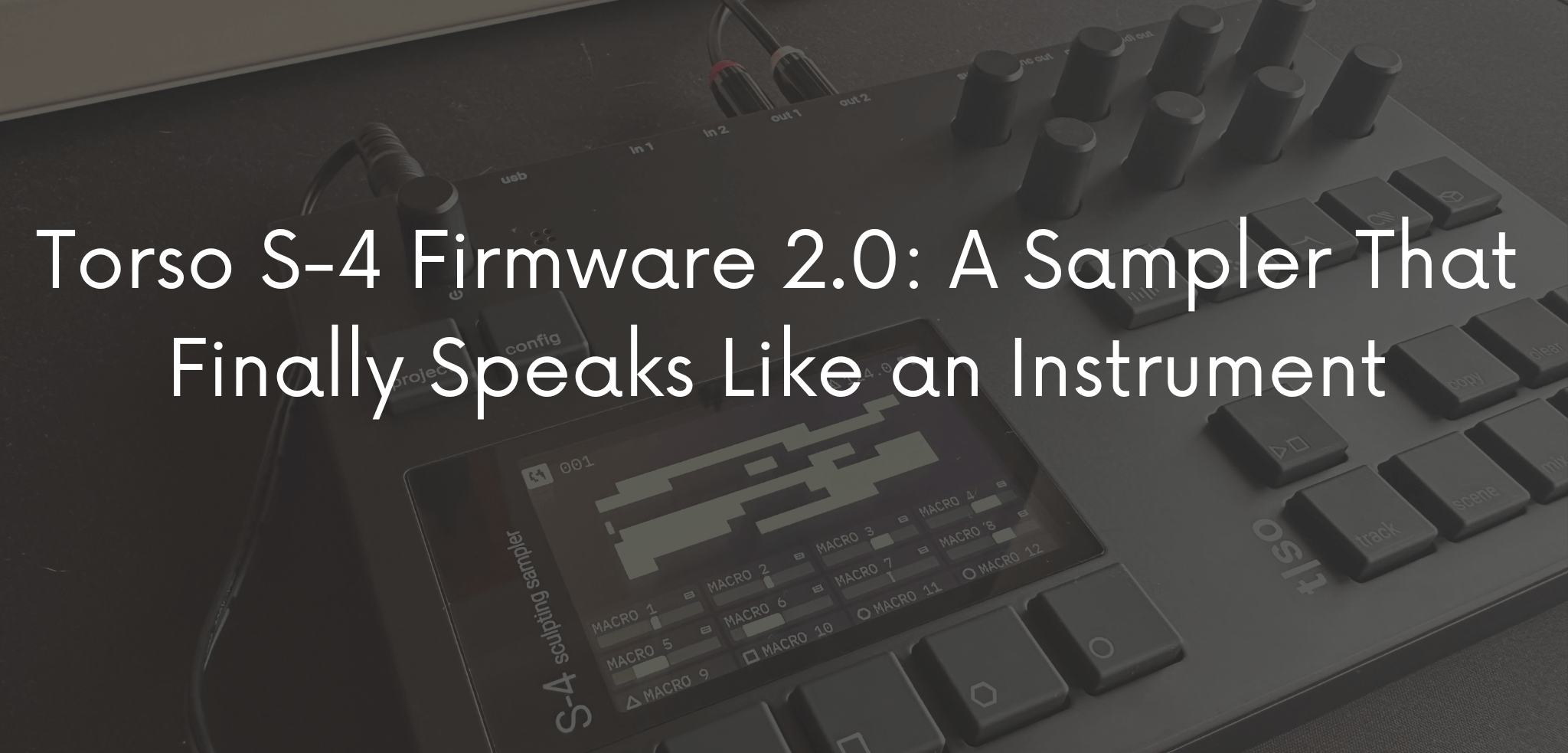Torso S-4 Firmware 2.0: A Sampler That Finally Speaks Like an Instrument

It’s not every day that a firmware update completely transforms a piece of gear. But that’s exactly what’s happened with the Torso Electronics S-4. A machine that once felt like a promising sketch has now become a fully realized instrument—alive, expressive, and deeply musical.
And with Firmware 2.0 officially releasing on June 17, I can say with confidence: this is the update that unlocks the S-4’s true voice.
I’ve been working with a pre-release version in the studio for the past week, and it’s been… well, kind of magic.
From Quirky Tool to Sculpting Powerhouse
I remember my first impression of the S-4 when it came out—it had a fresh concept, this four-track sculpting sampler built for live play and modulation. But it always felt like it was missing just a bit of depth, like the ideas were there but waiting to be fully born.
With firmware 2.0, everything clicks into place. It’s not just a better sampler—it’s a redefined one.
The update introduces a powerful STRETCH mode, which lets you time-stretch audio in real-time without affecting pitch. It’s beautifully implemented—play a loop, slow it down, pitch it around, and it still grooves. Pair that with the new DENSITY parameter, and suddenly you’re shaping grains of audio like clay. What begins as a drum loop becomes an ambient pad. A vocal phrase becomes a shimmering cloud of texture. And because it’s all tied into the S-4’s already rich modulation system, everything moves, breathes, and evolves.
This is where it stopped feeling like a sampler and started feeling like an instrument.
Sculpting, Not Just Sampling
What makes the S-4 special isn’t just its features—it’s the way they come together.
With the TRIM update, editing samples feels almost analog. Using [CTRL] + [TRIM], I chopped a cassette loop into shape in seconds. The tactile feedback is so immediate that I found myself spending more time listening than looking, editing by ear like it was tape.
Then there’s the joy of layering sounds across the four tracks, each with its own effects, filters, modulations, and sample engine. Sometimes I’d build glitchy beats on one track, freeze a field recording into texture on another, stretch a loop into a chordal pad, and still have space left for a bassline. It’s like composing with four tape decks, each capable of warping reality.
What impressed me most was how much the sampler invites experimentation. I wasn’t just arranging loops—I was discovering sound. Playing with freeze, shifting grain positions, modulating pitch and filter via internal LFOs, routing macros—it all felt alive.
Performance That Feels Personal
One of the standout additions in firmware 2.0 is Scene Mode. It lets you save up to 128 complete snapshots of the entire machine: samples, effects, modulation, even playback position. But what truly sets it apart is Perform Mode, where you can use a macro to morph between scenes like turning a page in a novel—except each page bends time and space.
I used it during a rehearsal and was stunned. I had scenes with raw drum loops, airy pads, chaotic cuts, and ambient textures—and with one twist of the macro knob, I transitioned between them live. Filters opened, reverbs swelled, grain densities shifted. It didn’t feel like switching presets; it felt like sculpting performance in real-time.
This is what sets the S-4 apart. It isn’t trying to emulate a DAW or mimic a vintage sampler. It’s carving its own path—something tactile, expressive, and completely open to exploration.
The Update That Changes Everything
There’s also a host of less flashy but hugely impactful improvements in this firmware release. The filters sound better—more character, more warmth, more useful resonance. Drive and compression bring punch and presence. The DSP has been optimized, so now you can run complex setups without dropouts. Even the USB audio implementation is cleaner, making it easy to route the S-4 into your DAW or live rig.
And yes, you can now stream directly from USB external storage, meaning less worry about memory and more time focusing on sound.
All of this combines into an experience that feels uniquely satisfying. The S-4 doesn’t just let you work creatively—it encourages it. Every parameter invites you to play, to tweak, to push a little further.
Is It for You?
If you’re someone who loves hands-on sound design, who works with field recordings, granular textures, experimental rhythms, or ambient atmospheres—this is a dream machine. If you perform live and need something reliable yet flexible, the new Scene and Perform modes are game-changers. If you were on the fence before… June 17 is your sign.
Because on that date, with the official release of firmware 2.0, the S-4 becomes something else entirely: a sampler that doesn’t just play back audio—it reshapes it, molds it, and lets you perform it like a living sculpture.
Final Thoughts
It’s rare that an update makes me fall in love with a piece of gear all over again. But that’s exactly what happened with the S-4.
It now sits at the heart of my setup—not because it replaces other tools, but because it offers something none of them do: a space where sound becomes fluid, physical, and immediate. Where performance and composition blur into one. Where the sampler becomes the instrument.
I genuinely can’t wait for more people to experience this. When firmware 2.0 drops on June 17, the S-4 won’t just be improved.
It’ll be reborn.

No Comments